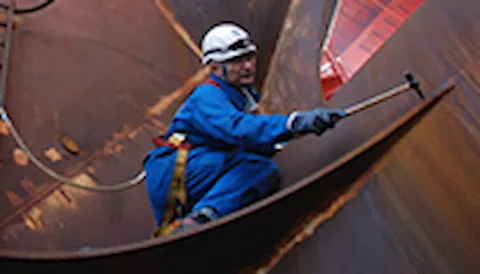Regulatory development for major hazards in oil and gas
Effective safety regulation by a competent and independent government body has a key part to play in maintaining safe oil and gas operations.
Offshore regulation history
Following the safety case regulations that followed the Piper Alpha disaster in the UK and the tragic Macondo blowout in the Gulf of Mexico, implementation of European Directive 2013/30/EU has driven a commonality of major hazard regulatory approach in Europe that takes best practice from various countries, including the UK. While the EU directive represents best practice in Europe for offshore oil and gas operations, DNV is conversant in regulatory International Best Practice (IBP) that allows us to support and develop regulations elsewhere.
DNV regulatory experience
DNV has experience in many different regulatory jurisdictions, ranging from safety goal-setting regimes (such as in most of Europe and Australia) to Norway, where there is a greater emphasis on guidance, and the USA, which has a history of prescriptive safety regulation. In Europe, DNV is supporting major hazard regulators in Greece and Ireland to develop and operate their regulatory regimes. We have also successfully worked with regulators in Qatar, Singapore, Brunei and elsewhere to develop new regulatory regimes.
Our specialists identify the regulatory tools and techniques that are most relevant and effective for each country. It is not a case of “one-size fits all”, or stoic application of IBP; the safety regulatory regime must be appropriate for the country and its oil and gas industry.
We can advise on how a safety regulatory regime should be built to maximize the benefit from regulatory activities, such as safety cases, verification and performance reporting, without placing a disproportionate regulatory burden on the industry.
Process for regulatory development
Primary legislation shapes a regulatory regime and it is here that DNV can first provide benefit by working with the regulator to ensure that primary legislation is technically appropriate and will deliver the desired outcomes. This is achieved through determining the applicability of safety regulation IBP for that country. The primary legislation often includes a requirement for risks to be as low as reasonably practicable (ALARP). Additional stipulations can be for safety cases or reports to be submitted before permission to operate is given, such as with the EU Directive.
Development of the regime is best carried out in a staged manner, allowing broad principles to be agreed upon before the development of detailed regulation and guidance. For the EU Directive, these principles are already defined. In general, the work required includes:
- Overall framework
- Development of a framework of regulations or guidance that implements the government’s safety-related goals and objectives via the regulatory authority, including the broad way in which this will be achieved through documentation submission (report of major hazards, or safety case and others), inspection and enforcement.
- Development of guidance (dependent on the framework requirements)
- The safety case, or report of major hazards, required from operators or owners to demonstrate that the major accident hazards and associated risks to safety have been identified and will be managed effectively
- Independent third party verification
- Inspection by the regulator
- Performance reporting to the regulator
- Incident reporting and investigation.
- Development of internal processes for the regulator
- Assessment and inspection processes
- Fees and levies made by the regulator.
- Stakeholder management
- To ensure the industry and other government bodies are aware of their responsibilities and take their views and issues into account.
- Training
- Training the regulator to ensure that the new regime commence smoothly.
Ongoing support
DNV also works with regulatory authorities once the safety regulatory regime is operating. We provide an independent assessment to the regulator of all aspects of a regulated operation from the wellhead to the consumers, either through direct inspection or assessment of safety cases and related documents.




